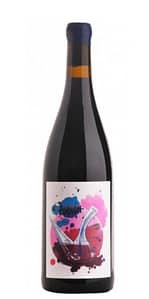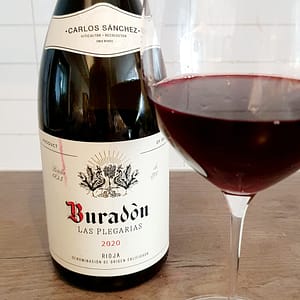This is a Ribera rosé with lots of character, from a classic winery that is steadily improving, or should we say: modernizing. This wine however has an inspiration from the rosés from earlier times. This can also be seen in the name and the label, porrón being the traditional drinking vessel.
It’s made from predominantly tempranillo (a small part is a historic field-blend). The grapes grow in east-facing plots at an altitude of 800-900 metres. The climate is continental with mediterranean features.
The cultivation is organic with biodynamic methods (Demeter certified). The grapes for this wine are harvested twice, the first one for freshness and the second -also relatively early- for more body. The first harvest undergoes a pre-fermentation maceration for 5 days, the second for 8 days. After a separate malolactic fermentation, the two wines are blended in February and continue their journey together in old barrels and concrete vats where they rest for 11 months. The wine is bottled without filtering, clarification nor addition of sulphur.

El Porrón de Lara 2021 (Peñalba López)
Garnet red. Fresh aroma, ripe red fruits (blueberry, cherry), flowers, earth, a balsamic note. Medium-bodied, juicy and savoury, silky tannins, red berries fruit, good concentration, mineral. Improves with air.
Price: Medium
Leave a Comment















